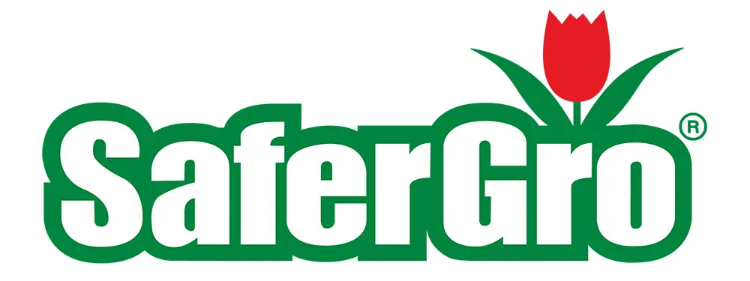Inicio
-
Creciendo para el futuro
-
Cosas que debes saber sobre cómo criar caballos felices en establos
Cosas que debes saber sobre cómo criar caballos felices en establos
Aunque mantener a su caballo en un pastizal le ofrece una forma de vida más natural, existen muchas razones por las que los propietarios optan por mantener a sus caballos en un establo o corral. Desafortunadamente, no todo el mundo tiene acceso a grandes pastizales, o quizás su caballo está herido y necesita pasar más tiempo en el interior. O en el caso de los caballos de exhibición, a menudo se los mantiene en el interior para evitar lesiones y la decoloración de su pelaje. Independientemente del motivo, alojar a su caballo en un corral es una forma cómoda y sencilla de controlarlo. A continuación, se ofrecen algunos consejos sobre cómo asegurarse de que su caballo se mantenga sano y feliz en su corral.
Elegir un establo

El lugar donde alojas a tu caballo es importante porque indicará cuánto tiempo tendrás que dedicar a limpiar el establo, alimentarlo y ejercitarlo. Mantener a tu caballo en tu propiedad, en tu granero o en tu establo puede minimizar los costos. Sin embargo, ten en cuenta que, si utilizas tu propio establo, el mantenimiento recaerá completamente sobre ti.
También puede optar por alojar a su caballo en establos, donde los empleados pueden ayudarle con la alimentación y el mantenimiento del establo. Según las instalaciones y su presupuesto mensual, los empleados pueden ayudarle con la alimentación y el mantenimiento del establo de parte o de la totalidad de sus caballos. Tanto si tiene su caballo en casa como en un establo cercano, es importante tener en cuenta la cantidad de tiempo que su caballo permanecerá en el establo. Lo ideal es que le permita a su caballo pasar suficiente tiempo fuera del establo para que pueda caminar y estirar las patas.
Tamaño y diseño estables

El tamaño de su establo es quizás uno de los aspectos más importantes a tener en cuenta. Un caballo debe tener suficiente espacio para estar cómodo en su establo durante períodos prolongados. En promedio, un establo debe tener 12' x 12' para un caballo estándar y 12' x 14' para razas más grandes.
Un plan de puertas abiertas que permita que su caballo vea a otros caballos es muy importante para su estimulación social. Esto puede ser en forma de una puerta para chismes o una puerta holandesa también. Los caballos son animales sociales y si se los deja solos pueden volverse solitarios y aburridos, lo que puede derivar en problemas de salud e infelicidad. Si es posible, mantenga a su caballo en un establo adyacente a un compañero equino. Mantener a los caballos uno al lado del otro es una manera fácil de asegurarse de que su caballo siempre tenga algo de compañía.
Otro factor a tener en cuenta es la ventilación. Los establos mal ventilados hacen circular el polvo y el moho, lo que puede provocar varios problemas respiratorios a tu caballo. Asegúrate de que tu establo reciba suficiente aire fresco, ya sea a través de ventanas abiertas o rejillas de ventilación.
Imprescindibles estables

Los elementos básicos esenciales para un establo de caballos incluyen la cama, un balde para comida y un balde para agua. Hay muchas opciones de cama, la que elija dependerá principalmente de su presupuesto. Tenga en cuenta que se gastará la cama con bastante rapidez, ya que desea proporcionar constantemente un lugar limpio y seco para que su caballo se quede.
Los caballos quieren moverse libremente y prefieren poder caminar. Si se los mantiene en un establo, pueden aburrirse y desarrollar malos hábitos, como morder el pesebre o caminar sobre el box. Los juguetes que rompen el aburrimiento pueden proporcionarle a su caballo algo de enriquecimiento y entretenimiento. A continuación, se indican algunas cosas que puede darle a su caballo para mantenerlo ocupado:
- Una pelota de golosinas
- Piedras minerales
- Frutas o zanahorias escondidas
- Hazlos trabajar por comida agregando heno a una red.
- Golosinas congeladas en una cuerda para que las laman para alcanzarlas.
Limpieza
Si mantiene a su caballo en un establo, es fundamental asegurarse de que su establo esté siempre limpio. La ropa de cama húmeda no solo puede dañar los cascos y provocar candidiasis, sino que también permite que se acumule el amoníaco de la orina que puede irritar los pulmones del caballo.
Limpiar los establos suele denominarse "limpiar". Mantenerse al día con la limpieza de los establos ayudará a reducir los olores , lo que reducirá la cantidad de moscas que molestan a su caballo. Los establos sucios atraen moscas que pueden ser muy irritantes para los caballos.
Ejercicio

Crear una rutina de ejercicios para tu caballo será muy importante si planeas mantenerlo en su establo durante un período prolongado. Los caballos necesitan moverse no solo para liberar energía, sino que también es crucial para su bienestar general. Un caballo que está inmóvil en su establo durante demasiado tiempo puede desarrollar varios problemas de salud y también puede afectar su salud mental. Si no tienes tiempo para montar, sacar a tu caballo a un potrero o pastizal puede permitirle la movilidad adicional que necesita. Si tienes a tu caballo en un establo, asegúrate de preguntar si los empleados supervisarán la salida de tu caballo o si tendrás que encargarte de su ejercicio.
Reflexiones finales sobre los beneficios estables
Aunque mantener a tu caballo en un establo puede parecer mucho más trabajo, te permite pasar más tiempo con él. El constante movimiento dentro y fuera del establo y el tiempo dedicado a hacer ejercicio solo fortalecerán el vínculo y podrían dar como resultado un caballo más feliz y saludable.
Compartir
